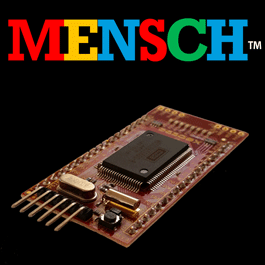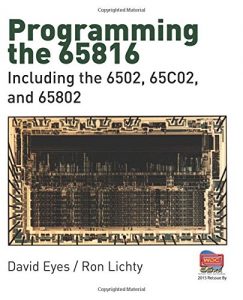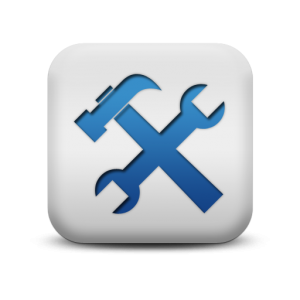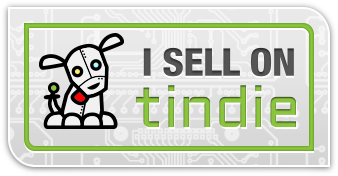Learn with or build your own 8-bit or 16-bit computer!
Western Design Center 65xx technology and Bill Mensch has taught professional engineers, graduate students and beginners Computer Science spanning generations. Be the first “kid on your block”, educator or curriculum developer in your school district to recognize the amazing 6502, 65C02 and 65816 that started the Computer Science and Engineering revolution. WDC and WDC’s technology can help you become all you were meant to be in the information age and STEM career.
Learn about Computer Science and teach next generations of innovators. You can do this with WDC technology. Get started now by browsing this website and The Mensch Foundation website and start your own revolution of understanding about semiconductor architecture and the development of microprocessors (MPUs), microcomputers (MCUs) and microcontrollers (MCUs). Learn the difference between microcomputers and microcontrollers by working with them.
Learn to be a leader and not a follower like so many others have become from their first steps of understanding digital technology with a 6502, 65C02 or 65816. Next time you communicate with Steve Wozniak (Woz) ask him what the 6502, 6521, 6522 and/or 65816 meant to and for him. You might be surprised by his answer.
The following sequence will take your learning from the beginning understanding of microprocessors to a higher level of understanding and application proficiency using our favorite 8-bit and 16-bit single board computers (SBCs) with WDC’s 65C02 and 65816 microprocessor technology.
Learn To How to Program an 8-bit or 16-bit Computer:
Programming the 65816-Including the 6502, 65C02 and 65802
This manual reviews some of the key concepts that must be mastered prior to learning to code in assembly language.
These concepts include the use of the binary and hexadecimal number systems; boolean logic; how memory is addressed as bytes of data; how characters are represented as ASCII codes; binary-coded decimal (BCD) number systems, and much more! Also discussed is the use of an assembler, which is a program used to write machine-language programs, and programming techniques like selection, loops, and subroutines
Written by: David Eyes and Ron Lichty- All rights owned by WDC
Buy Here:
Create Code and Simulate with Free Tools and Simulator:
WDCTools
WDCTools suite with an integrated project simulator/debugger. These tools were developed for the optimization of product development, but can also be enjoyed as some standalone 65xx coding fun with it’s flexibility in coding options using either Assembly or C language code.
Download Today:
WDCTools Download Registration
Now are You Ready to Experience Hardware?
Try the low cost MENSCH™ Microcomputer:
 The MENSCH™ microcomputer W65C265QBX is a small single board computer (SBC), 1.25” x 2.25”, using the System on a Chip (SoC) W65C265S MCU. The W65C265S was invented and designed by Bill Mensch WDC’s founder after he invented and designed the 65816 microprocessor.
The MENSCH™ microcomputer W65C265QBX is a small single board computer (SBC), 1.25” x 2.25”, using the System on a Chip (SoC) W65C265S MCU. The W65C265S was invented and designed by Bill Mensch WDC’s founder after he invented and designed the 65816 microprocessor.
As a recognized pioneer of the microprocessor industry. Mr. Mensch’s twenty two patented inventions were/are used on the original Motorola 6800 Microprocessor Family, MOS Technology 6502 Microprocessor Family, and WDC’s 65C02 and 65816 Microprocessor Families. As an electrical engineer, 1971 BSEE from The University of Arizona (UA), having taught graduate level classes at Arizona State University (ASU) on SOC design for five years, advisor to four university colleges of engineering for over two decades, the MENSCH™ was designed in hopes that it will attract learners to consider a career based on an Electrical and Computer Engineering (ECE) education, hardware and software engineering.
Try Our Other Single Board Computers:
The W65C02SXB is a seminal single board microcomputer for developing educational and industrial strength microcontrollers. As such, the W65C02SXB has become an 8-Bit Microcomputer Education Single Board Computer (SBC) based around the world renowned W65C02S 8-bit microprocessor…Read More by clicking the product information button above!
The W65C816SXB is a seminal single board microcomputer for developing educational and industrial strength microcontrollers. As such, the W65C816SXB has become an 8/16-Bit Microcomputer Education Single Board Computer (SBC) based around the world renowned W65C816S 8/16-bit microprocessor…Read More by clicking the product information button above!
The W65C134SXB is based around the W65C134S which is a feature rich 8–bit System-on-a-chip (SOC) based on the W65C02 microprocessor with an advanced (originally designed for life support) Serial Interface Bus (SIB) token passing local area network for multi–W65C134S microcomputer systems…Read More by clicking the product information button above!
The W65C265SXB is based around the W65C265S which is a feature rich 8/16–bit System-on-a-chip (SOC) based on the W65C816 microprocessor. With proven functionality for developing microcontroller applications in production that require in-system diagnostics, the W65C265SXB is a perfect low power/IoT solution…Read More by clicking the product information button above!
Computer Science Teachers and Curriculum Developers:
WDC recognizes the role Computer Science and Engineering (CSE) education plays in today’s and future societies. Manmade Intelligence (MI) promoted as and named Artificial Intelligence (AI) in 1956, requires contributors to have an ever evolving understanding of microprocessors and supporting technologies. WDC promotes AI as “embedded intelligence” (EI) and “application specific” EI. For example, our solar panels, microwave ovens, refrigerators, airplanes, autos, smartphones and smart-tools all have application specific EI.
AI exists in its current form because of microprocessors processing ever more information we call data. The information economy as portrayed by John Naisbitt in Megatrends, 1982, was built on the backs of microprocessor hardware starting with the 6502 before the IBM PC. Apple, Atari and Commodore computers launched the revolution with 6502 microprocessors, the most documented microprocessors of all time.
As with any learning, local and global economies, more and more, rely on a labor force that is becoming ever more learned. Science, Technology, Engineering and Mathematics (STEM) is promoted as essential for today’s and future work forces, both local and global. Understanding Computer Science at the basic level is required as a foundation for all types of learning. Code.org boldly states this in their promotional literature and curriculum.
Where does the 6502, 65C02 and 65816 microprocessor fit in, ask the founders of Code.org. They got started at 10 years old with the 6502. Build your own and your students relationship with this seminal technology now available from the inventor of the 6502, 65C02 and 65816.
Although the 6502 family of microprocessors, also known as central processing units (CPUs), was seminal, the student’s relationship with CPUs primarily revolves around the interest and needs of the educator and/or their institution. Creating your own enriching extensions of readily available curriculum provides for more optimized and effectively customized implementation of said curriculum.
The 6502 family has been in education in a big way since 1975, think Apple II, C64 and Atari and now in the form of “emulators” on your favorite browser, PC or smartphone. We encourage educators, schools and school districts to share best practices.
We ask that you reach out to us, if you are so inclined, with the following form or through Contact Us.
Visit The Mensch Foundation for more information on Computer Science and Engineering (CSE) as well as Embedded Systems (ES) and Embedded Intelligence (EI) information.
Computer Science Curriculum Developer Form











